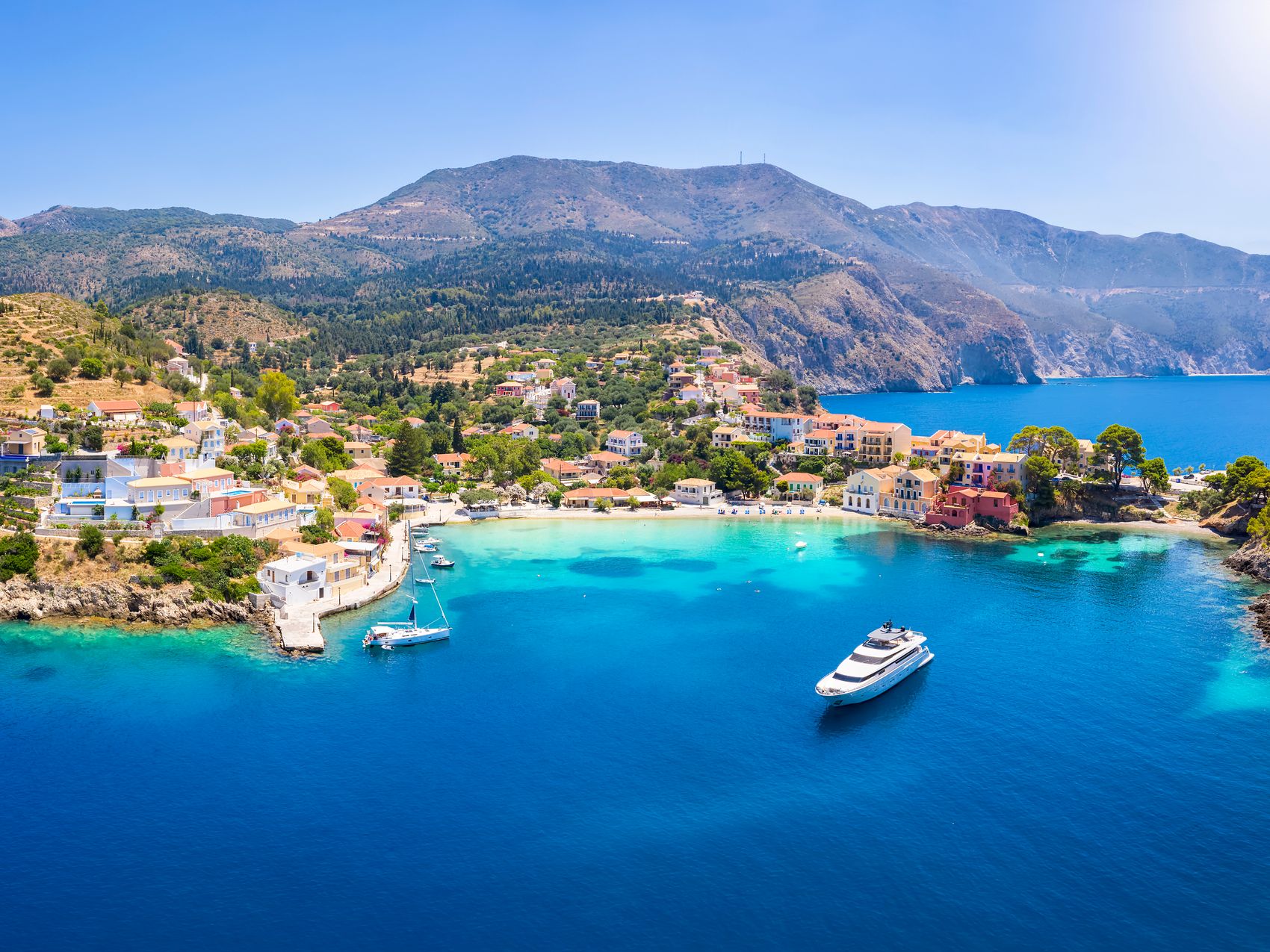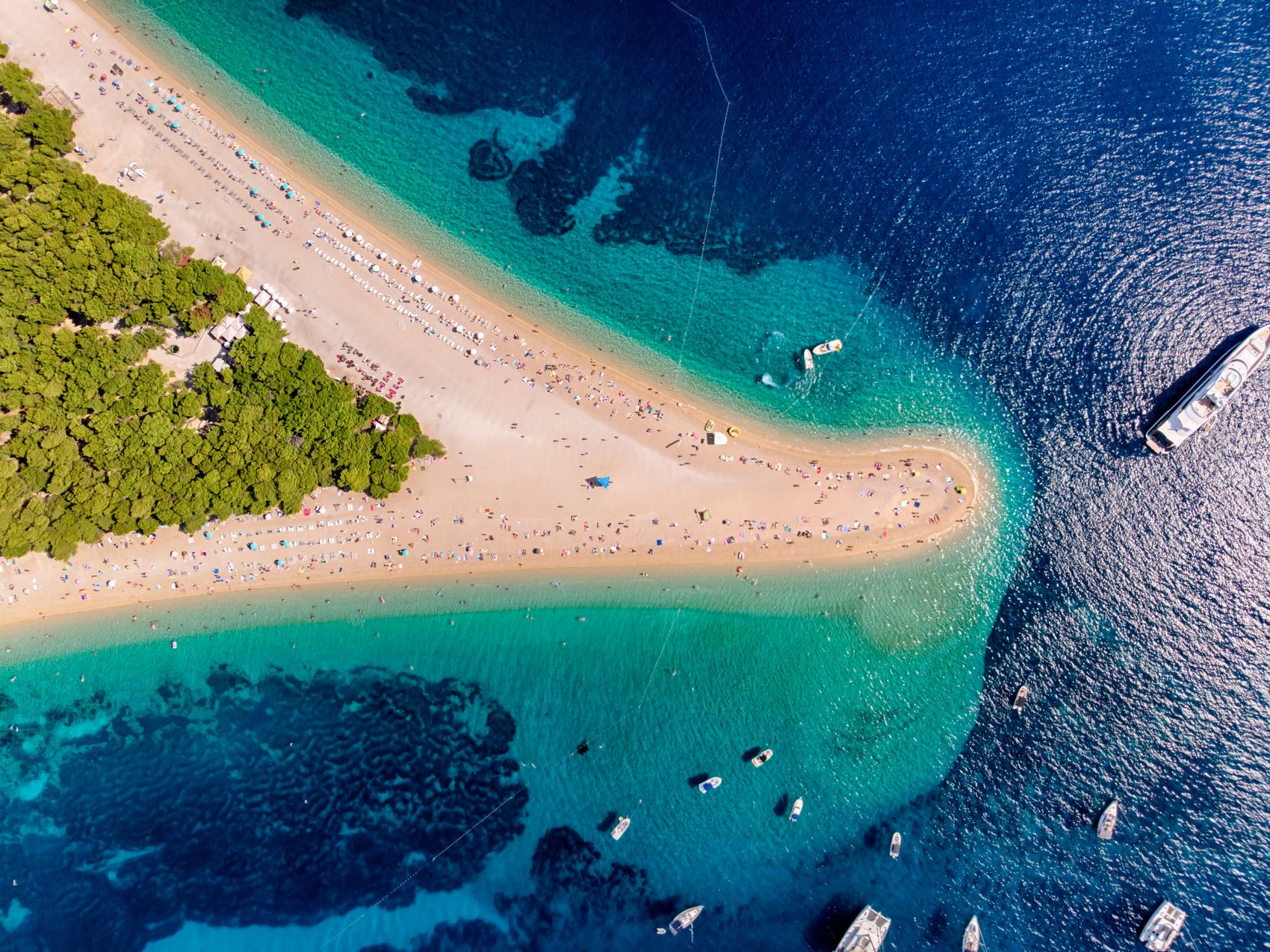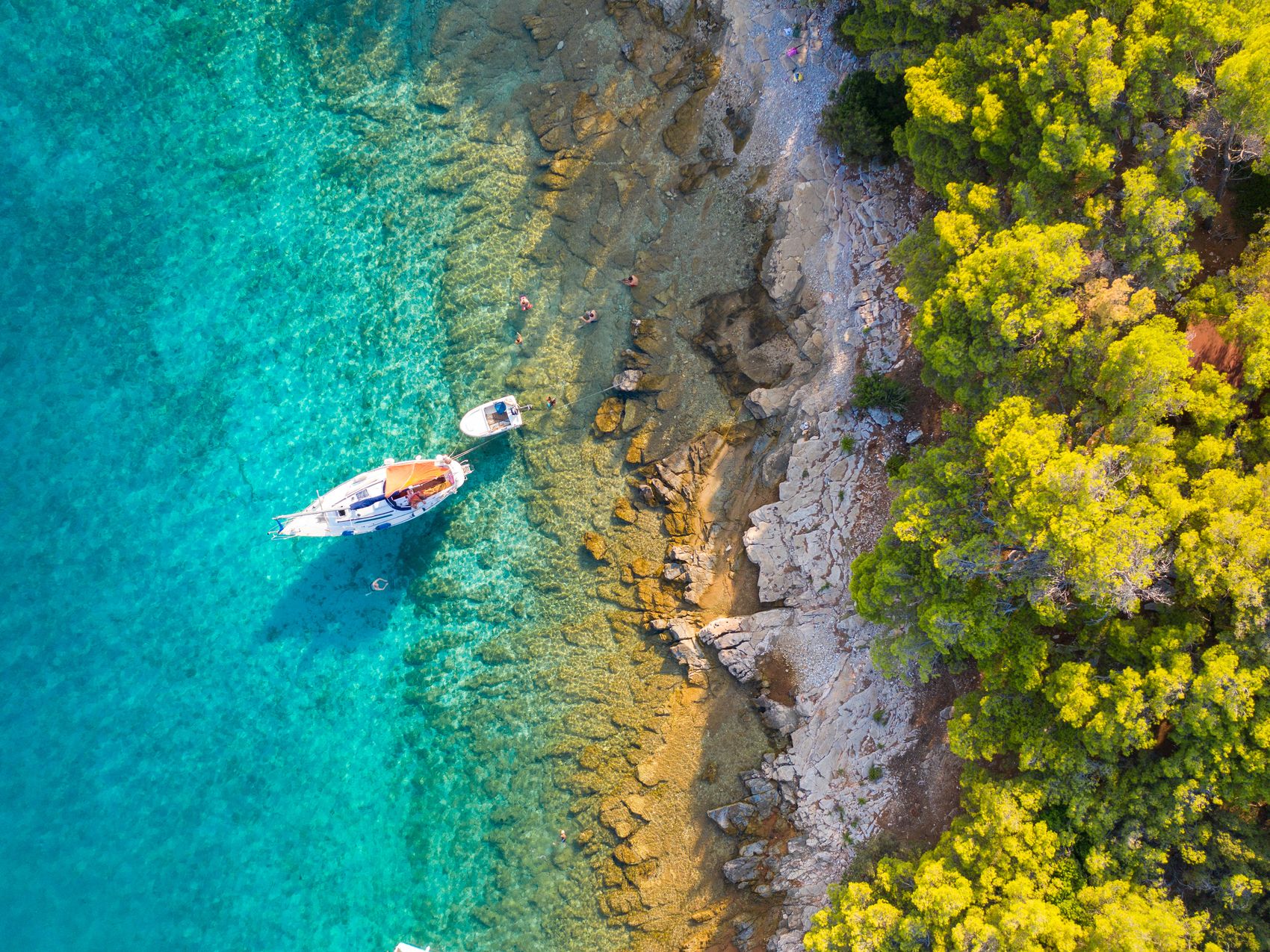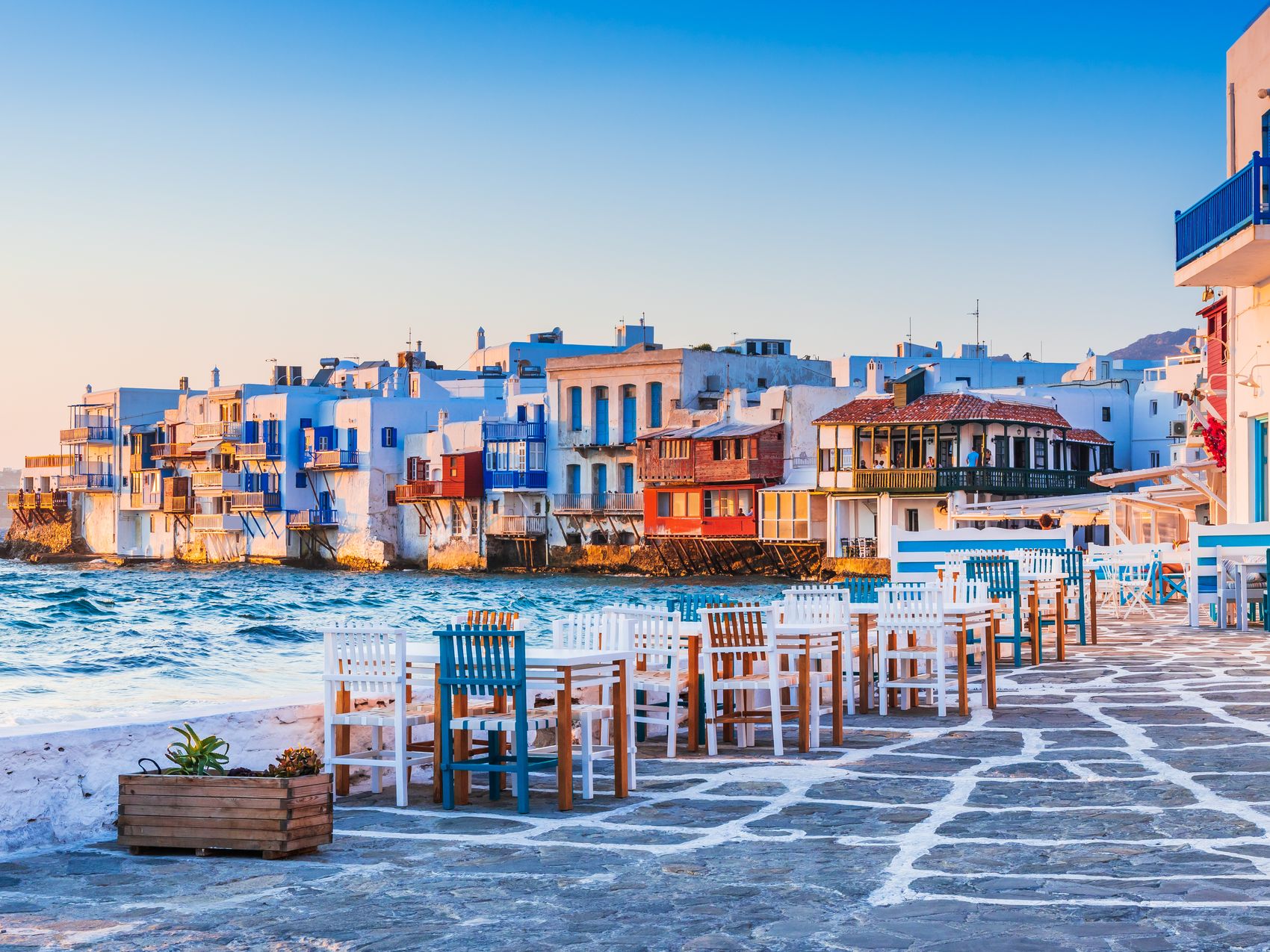The aesthetically pleasing oceanic views, stunning nature and authentic Grecian cuisine make sailing in Greece nothing short of iconic.
We admit: Greece stole our hearts. Regardless of where you sailed, we do not doubt that you will return to Greece. Moreover, its history is one of the most fascinating in all Western civilizations. You can expect to see temples, statues, and remnants of ancient settlements across Greek shores. Underwater, there’s plenty to see as well. Numerous wreck sites, coral reefs, and natural underwater caves create ample opportunities for scuba divers.
Greece’s nature doesn’t disappoint either. A typical anchorage has azure blue water, a sandy beach, pine-coated hills, and dramatic chalky cliffs against the backdrop of a sunny sky. Often, there are plenty of hiking trails that lead you through native forests and olive groves.
Using local ingredients, Greek cuisine is among the most beloved in the world. Pistachio nuts, feta cheese, wine, lamb, seafood, and some of the world’s best olives, what’s not to like? Without exception, everywhere we ate, we were spoiled. Not only the quality of the food but also the staff’s exceptional hospitality, which makes sure you’ll want to return.
If you are looking for the best tips for sailing in Greece, you are in the right place. Keep reading as we cover the following:
- Where to sail in Greece
- The Best time to sail in Greece
- What is the best way to Sail around the Greek islands?
Where to Sail in Greece
The astounding number of Greek islands – more than 6,000! - guarantees there’s always a destination that matches your preferences. Despite the popularity of this cruising area, many marinas, and buzzing towns, there are also plenty of secluded anchorages to escape the crowds. With mostly sunny, warm, and sometimes windy summer weather, Greece is the perfect choice for a sailing holiday. Here are the best places to go sailing in Greece.
Ionian Sea
As we close in on Corfu, the strong northerly wind that funnels through the Adriatic Sea abates. We can relax when we drop our anchor in Agios Georgios Bay. Immediately, we appreciate a key feature of sailing the Ionian Sea on Greece’s west coast: generally less windy conditions than elsewhere in the country. On a hike around the bay, we explore the historic village of Afionas and marvel at the beauty of Porto Timoni (Twin Bay).
We pass ancient olive groves and meet friendly locals, like a lovely lady who offers us figs from her tree. What a warm welcome!
In the historic town of Kerkira on Corfu’s eastern shore, we stock up on fresh food at the municipal market and taste the outstanding local cuisine in one of the many restaurants. On beaches just outside Kerkira, party-goers can eat their heart at one of the many clubs.
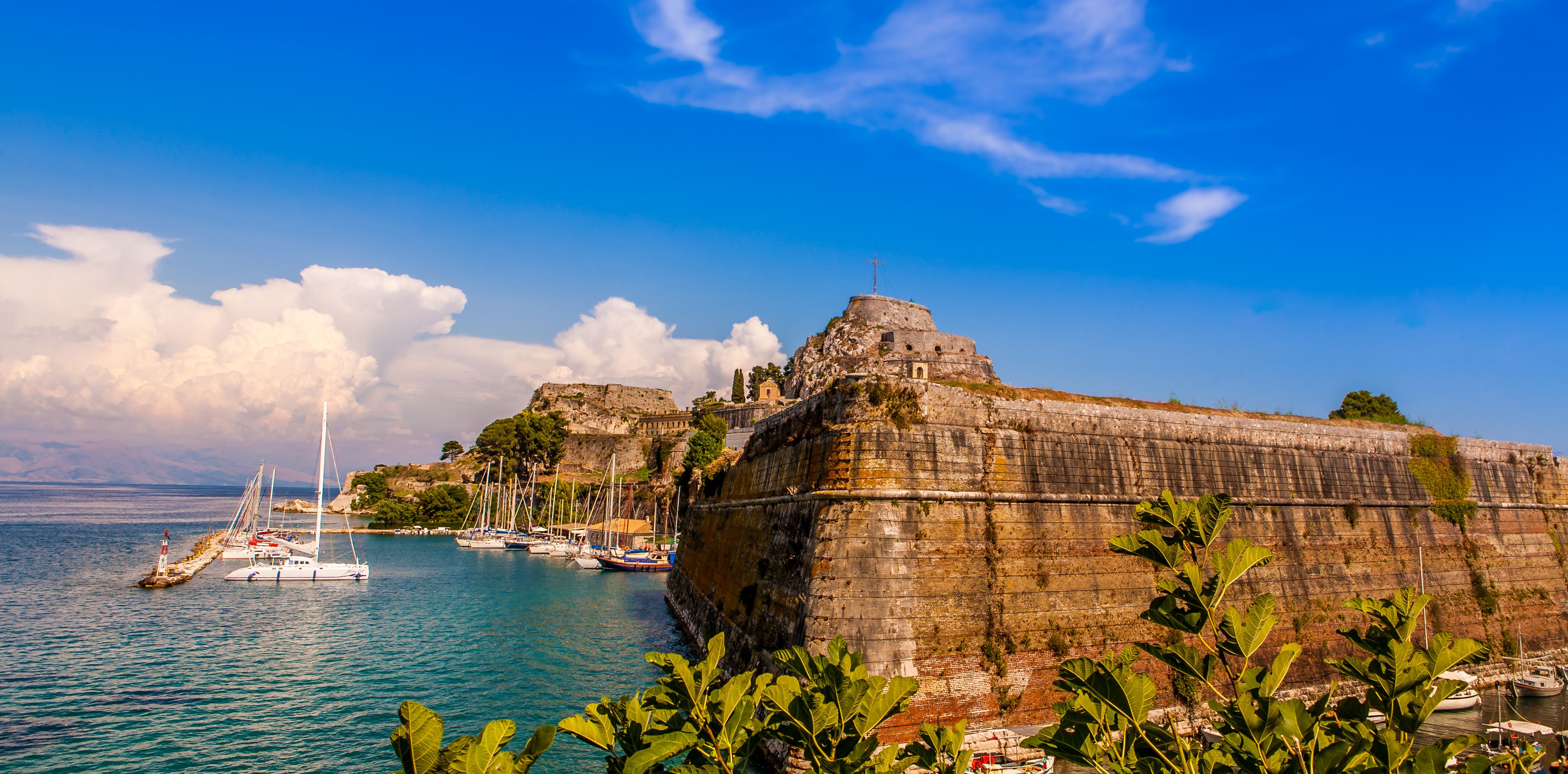
As we leave Corfu and head south, we experience how conveniently close the Ionian Islands are to each other. We anchor in Paxos’ sheltered bay and enjoy the views from its bell tower. The two main charter hubs in the region are Preveza on the mainland and Lefkas on the eponymous island. We find a spot at Preveza’s town quay and later anchor in pretty Tranquil Bay opposite tourist-friendly Nydri on Lefkas. The neighbouring island of Kalamos is a lot calmer.
Harbourmaster George helps us moor and later we enjoy drinks and moussaka at his restaurant. “I don’t charge for mooring, only for food,” he smiles.
Terra Sylvestris runs a nature restoration project, which is educational and inspiring. Sailing in this area means making choices, as each island has its charm and highlights. We use favourable winds to sail further south, so skip the famous islands of Ithaca, Kefalonia, and Zakynthos. They are all within easy distance from Preveza and Lefkas, so they will often feature on cruisers’ itineraries.
Peloponnese Coast
Our next destination is Pylos on the western shore of the Peloponnese Coast. We anchored in a large, well-protected bay close to the old town. We learned that the marina lacks a harbourmaster and facilities so that we can moor in any spot for free! We make our way to the Venetian castle, which overlooks the bay. The immense structure is mostly in ruins, except for the mosque-turned-church and a museum exhibiting artefacts from the civilizations that once ruled here.
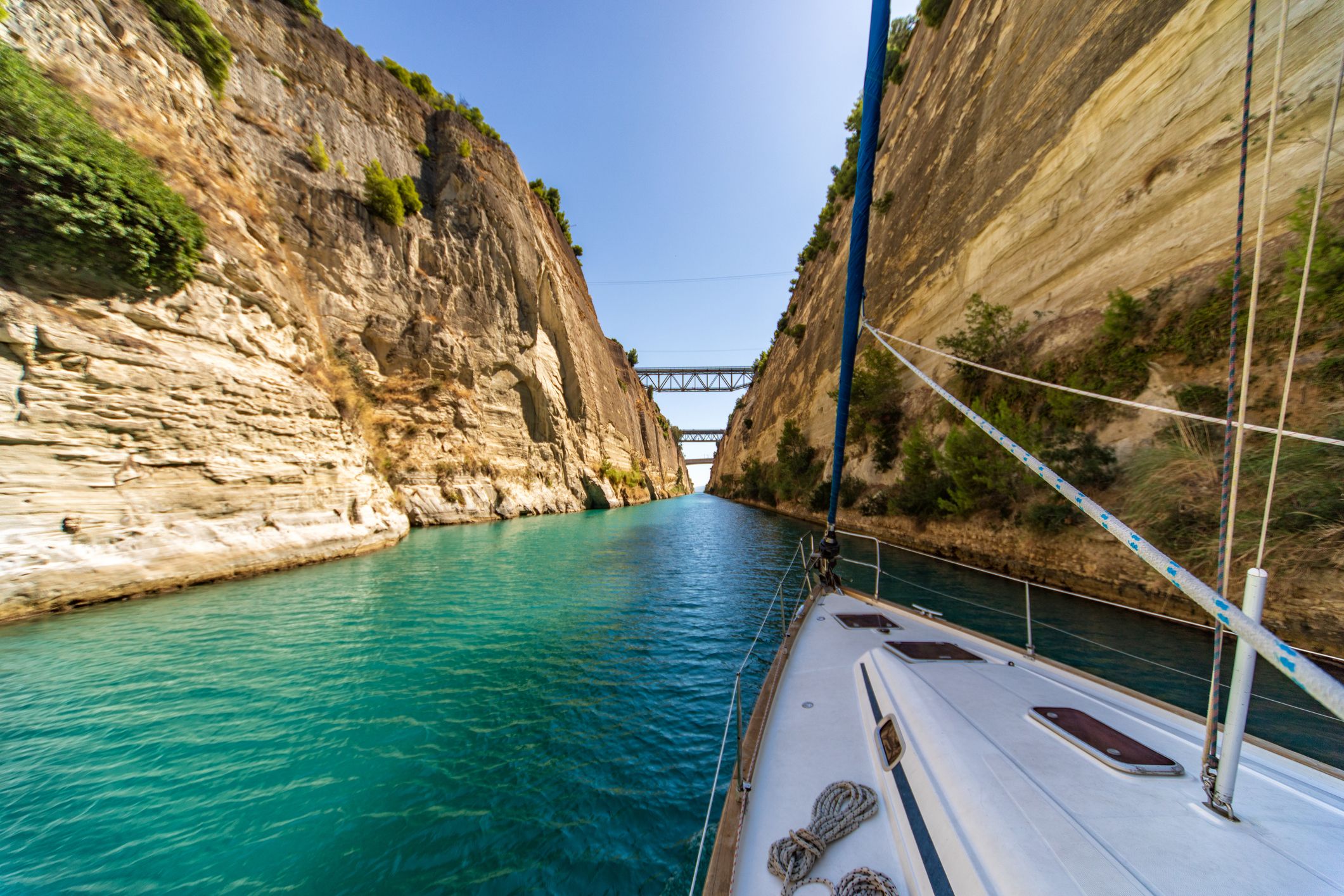
Not far from here is the Corinth Canal, which connects the Ionian to the Aegean Sea. Its spectacularly high limestone walls make it a memorable shortcut to the central charter hub of Athens. From there, it’s close to the islands of Salamina, Aegina, Agistri, Poros, Hydra, and Spetses. As this area is typically less windy than the rest of the Aegean Sea, it is popular among sailors who are less experienced or favour calm conditions.
Aegean Sea
Famous islands like Santorini and Mikonos are located in the southern Aegean Sea, close to other Cyclades Islands like Paros and Naxos. Fans of fancy beach clubs, luxury shopping, and fine dining will love it here. Other well-known islands in this area are the Dodecanese and the eastern Sporades islands of Ikaria, Samos, and Fourni. Here you’ll find the traditional images of white houses and churches. With the exception of green Naxos and Samos, these islands feature bleached rock landscapes dazzling under the Mediterranean sun. The few trees that grow here are bent southward by the prevailing wind: the strong northerly Meltemi, which peaks in summer. It can lead to demanding sailing conditions. The area is accessed from charter centres in Lavrion, Kos, Alimos, Rhodos, Meltemi, or Paros.
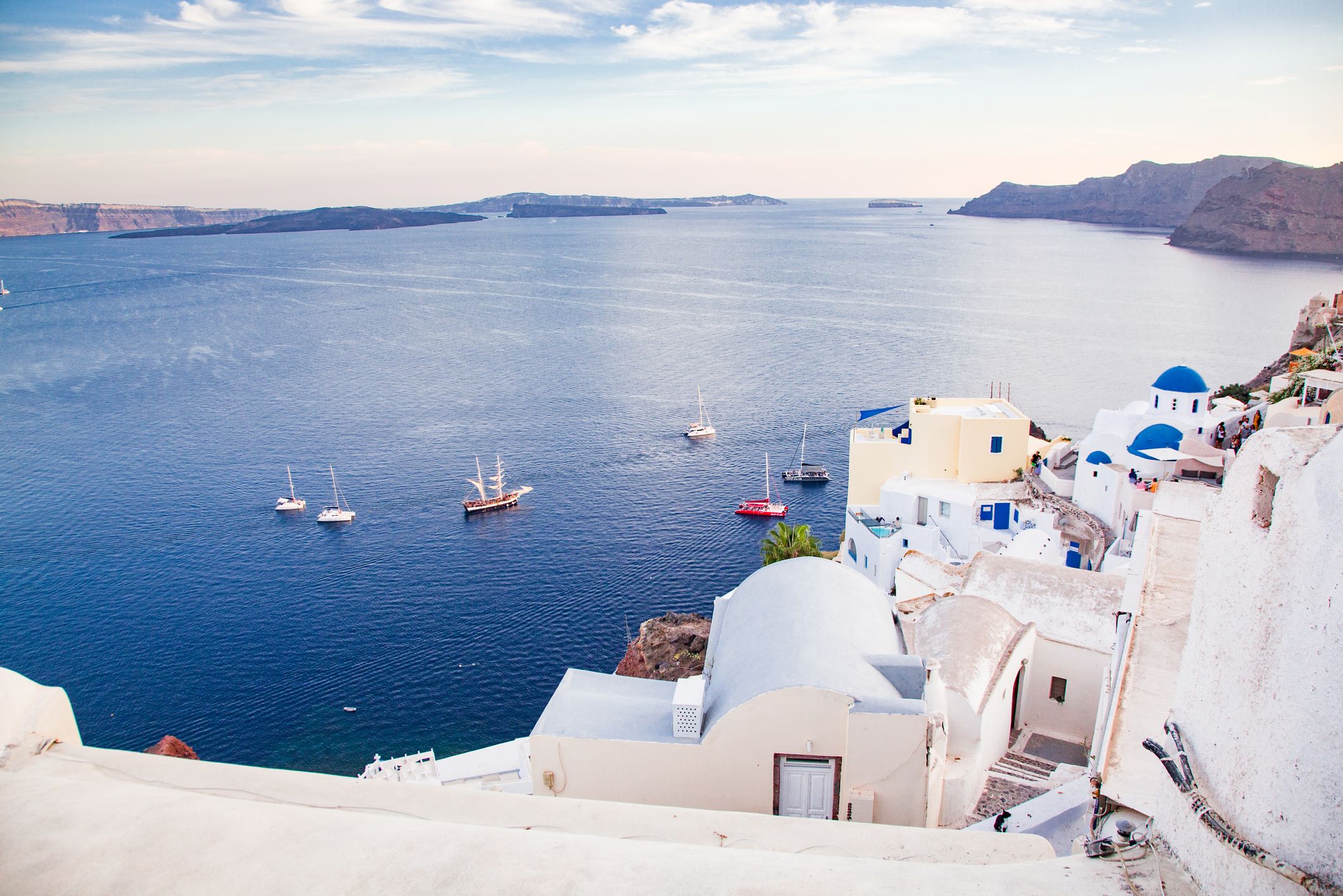
The northern Aegean Sea is less crowded. Although it’s as beautiful as other areas in Greece, charter sailing has not developed in this area to the same extent as the south Aegean. On average, the northern Aegean winds are lighter than in the south. The Northern Sporades Islands Alonissos, Skiathos, Skopelos, and Skyros offer peace and quiet, unspoiled nature, and pristine beaches. Yacht charter bases at Skiathos, Volos, and Thessaloniki provide good access to the northern Aegean area, but it is also accessible from Lavrion and Alimos.
Whether you’re looking for fun in the sun in Mikonos, history in Athens, or nature in the Ionian Islands, a yacht charter in Greece offers gems for everyone. Be prepared to have your heart stolen!
What is The Best Time to Sail in Greece?
If you want to experience the remarkable scenery Greece has to offer, you’ll have to book a trip after determining the best time to sail in Greece.
The sailing season in Greece typically runs from May to October since the climate is suitable and there are a few storms.
The whole season is unique, but you’ll have to pick a time that suits you best. A yachtsman’s sports season is May and June. Winds are stronger here, and the seas can be rougher. Sports sailing is ideal in these conditions.
The high season is July and August since it’s a great time to enjoy the summer with temperatures ranging from 26 to 30 degrees Celsius. It’s a perfect time to enjoy the proper Mediterranean climate.
The weather cools down a bit during September and October, but the sea remains warm. Boat rental prices are also more reasonable outside of the main season.
What is The Best Way to Sail Around the Greek Islands?
The Marine infrastructure in Greece has advanced over the years. If you plan on sailing in Greece, you have various options depending on your preferred experience. Your choice will depend on your budget and the amenities you need while sailing in Greece. Greece has an advantage over other Mediterranean countries in that marinas are not very expensive. Savings can be up to hundreds of euros compared to sailing in Croatia or Italy. Here are some of the most convenient ways:
Sailing Yacht
Sailing yacht is an excellent way to have an unforgettable sailing experience. You can choose to hire a sailboat in Greece. What’s more? There are so many options to choose from. Prices typically range from €113 to €23.512 per day.
Catamaran
Catamarans are a great choice if you have a large family and want to ensure they are comfortable during the sailing trip. Depending on your budget, you can choose from a simple or luxurious Catamaran. They range from as low as €300 to as high as €7.200 per day.
Gulet
If you value your family’s comfort, a gulet is a worthy choice while sailing in Greece. While they are not the cheapest option, they will meet your high standards. They range from as low as €800 to as high as €14.200 per day.
Yacht For Charter!
Sailing in Greece is an unforgettable experience that will leave a lasting impression on you. If you are eager to explore Greece’s rich nature and culture during your sailing trip, don’t hesitate to reach out to us. At Boataround, we ensure you find yachts that meet your standards and guarantee comfort. Reach out to us to secure the best deals.
FAQs
How much time do you need to sail in Greece?
The average sailing holiday in Greece is a week long. Two weeks would be an appropriate amount of time to explore the vast natural beauty of the Grecian coastline.
Can you sail in Greece in 3 days?
Yes! However, you won’t have a whole sailing experience. Most charter companies provide boat rentals from Saturday to Saturday. Therefore, if you want to enjoy Greece fully and discover its many diverse islands, we recommend sailing for at least a whole week.
How to find a good skipper while sailing in Greece?
If you plan on sailing in Greece with a skipper to increase your comfort, you must pick the right candidate. The best option is to use well-known agencies with which Boataround cooperates.
Suggested sailing routes around the Greek coast
Greece is considered a sailing paradise. Unfortunately, it's impossible to explore it in a week. In order to get the most out of your cruise, we have prepared a list of the most popular itineraries.
Sailing around Athens – 7-days itinerary
Where to go sailing in the autumn?
About Sailors for Sustainability: Floris and Ivar are two Dutch sailors who sail around the world searching for sustainable solutions. Their inspiring stories of positive change aim to accelerate the transition to a society in which we live in harmony with nature and each other.
